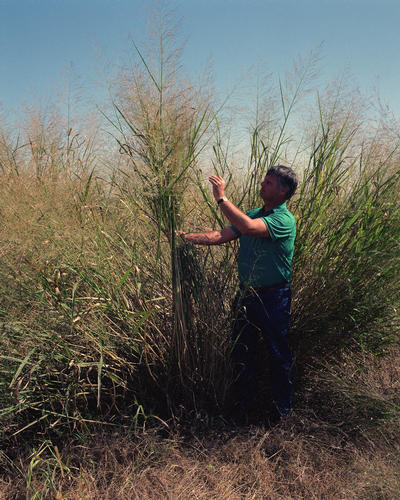Using biomass and biofuels made from biomass has positive and negative effects on the environment. One benefit is that biomass and biofuels are alternative energy sources to fossil fuels. Burning fossil fuels and biomass releases carbon dioxide (CO2), a greenhouse gas. However, the source plants for biomass capture almost as much CO2 through photosynthesis as biomass releases when burned, which makes biomass a carbon-neutral energy source.1
Burning wood
Using wood, wood pellets, and charcoal for heating and cooking can replace using fossil fuels for these activities, which may result in lower CO2 emissions overall. Wood can be harvested from forests, from woodlots, or from urban trees that fall down or have to be cut down.
Wood smoke contains harmful pollutants such as carbon monoxide and particulate matter. Modern wood-burning stoves, pellet stoves, and fireplace inserts can reduce particulates released from burning wood. Wood and charcoal are major cooking and heating fuels in low-income countries, but if people harvest the wood faster than trees can grow, it causes deforestation. Planting fast-growing trees for fuel and using fuel-efficient cooking stoves can help slow deforestation and improve the environment.
Burning municipal solid waste or wood waste
Burning municipal solid waste (MSW), or garbage, in waste-to-energy plants could result in less waste buried in landfills. On the other hand, burning garbage produces air pollution and releases the chemicals and substances in the waste into the air. Some of these chemicals, which are mostly related to burning non-biomass materials in the garbage, can be hazardous to people and the environment if they are not properly controlled.
The U.S. Environmental Protection Agency (EPA) applies strict environmental rules to waste-to-energy plants, which require them to use air pollution control devices such as scrubbers, fabric filters, and electrostatic precipitators to capture air pollutants.
Scrubbers spray a liquid into waste-to-energy gases produced from burning waste to neutralize acids in the gases. Fabric filters also remove particles from the gases. The particles—called fly ash—are mixed with the ash that is removed from the bottom of the waste-to-energy furnace.
A waste-to-energy furnace burns at high temperatures (1,800°F to 2,000°F), so it can break down the chemicals in MSW into simpler, less harmful compounds.
Disposing ash from waste-to-energy plants
Ash from waste-to-energy plants can contain high concentrations of various metals that were present in the garbage. Textile dyes, printing inks, and ceramics, for example, may contain lead and cadmium.
Separating waste before burning can solve part of the problem. Because batteries are the largest source of lead and cadmium in municipal waste, they should not be included in regular trash. Florescent light bulbs should also not be put in regular trash because they contain small amounts of mercury.
The EPA tests ash from waste-to-energy plants to make sure that it is not hazardous. In particular, the EPA tests for chemicals and metals that could contaminate ground water. Some MSW landfills use ash the EPA considers safe as a cover layer for their landfills. Some MSW ash is used to make concrete blocks and bricks.
Collecting landfill gas or biogas
Biogas, which may be referred to as renewable natural gas, forms as a result of biological processes in sewage treatment plants, waste landfills, and livestock manure management systems. Biogas is mainly methane (a greenhouse gas) and CO2. Many facilities that produce biogas capture it and burn the methane for heat or to generate electricity. Biogas-fueled electricity is considered renewable and, in many states, contributes to meeting state renewable portfolio standards (RPS). This electricity may replace electricity generation from fossil fuels and can result in a net reduction in CO2 emissions. Burning methane produces CO2, but because methane is a stronger greenhouse gas than CO2, the overall greenhouse effect of CO2 is lower than it is for methane.
Biofuels
Biofuels are generally cleaner burning than petroleum fuels made from crude oil, but biofuel production and consumption does effect the environment. Biofuels may be considered carbon-neutral because the plants that are used to make biofuels (such as corn and sugarcane for ethanol and soybeans and oil palm trees for biodiesel) absorb CO2 as they grow and may offset the CO2 emissions from producing or burning biofuels.
1 Source: U.S. Energy Information Administration, Monthly Energy Review, Environment section note; see Note 2: Accounting for carbon dioxide emissions from biomass energy combustion.
Last updated: April 17, 2024.

